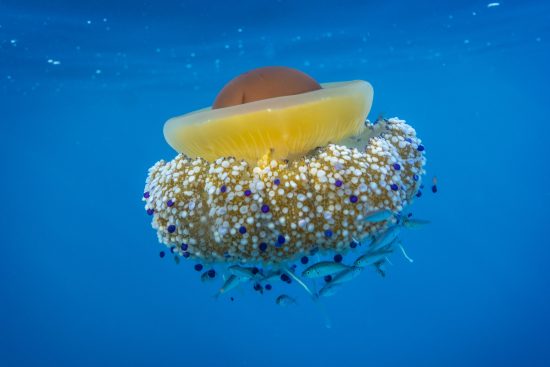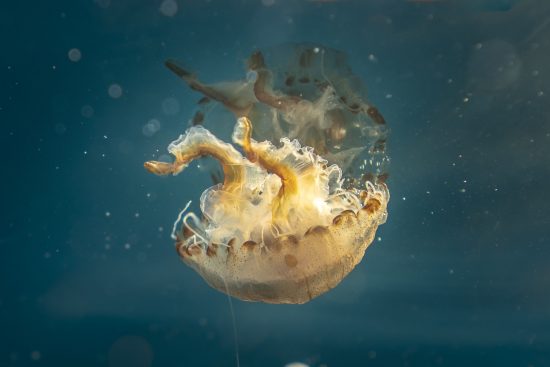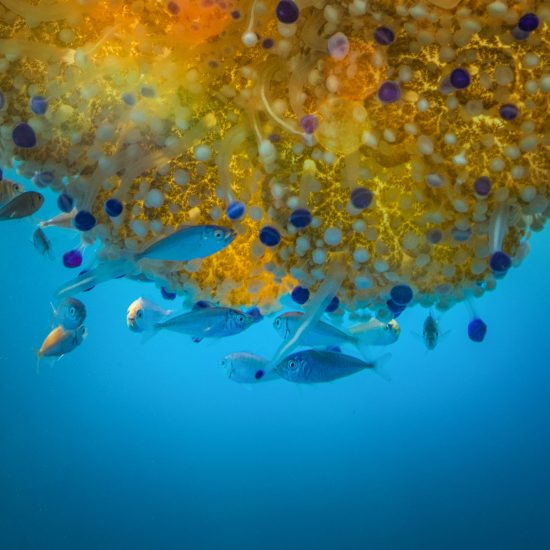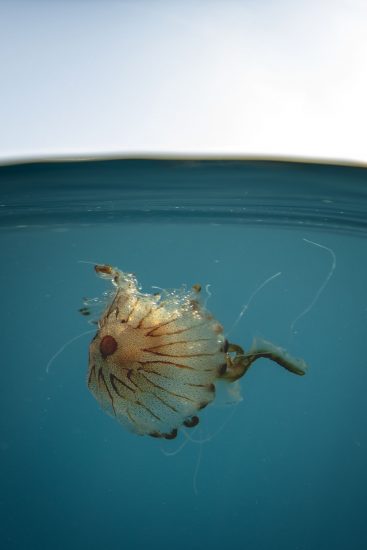





Nowadays, jellyfish can be found all over the Adriatic.
Though they may have an attractive appearance, jellyfish should be treated with attention and caution. Experts warn that they should never be touched as they cause stinging and burns. If you get burned by a jellyfish, cool the burn site as soon as possible, apply a cream or gel that prevents burns or lubricate with aloe vera.
Recently, diving in the Adriatic, I encountered a cauliflower-like creature, the Cotylorhiza tuberculata jellyfish.
This jellyfish lives throughout the Mediterranean Sea, is endemic, feeds on plankton, is most commonly found on the high seas and sometimes honors us with it's presence in the coastal Adriatic.
Touching it is harmless, it has almost no effect on humans so you don't have to be scared. Practice has shown that only very sensitive people feel a slight tingling sensation when their skin comes in to contact with them.
This jellyfish's sleek, elevated dome is surrounded by a gutter-like ring. It has both long and short appendages which are white, bright blue and purple.
Quite the opposite of a Cotylorhiza tuberculata is the Chrysaora hysoscella, better known to us as the 'compass jellyfish'. It is a species of jellyfish that lives in the coastal waters of the Atlantic Ocean and the Mediterranean Sea, characterized by a yellow-brown coloured dome that resembles a compass. It can grow up to 30 centimeters in diameter, with tentacles which can grow up to 1 meter in length. Like most sea jellyfish, they move mainly with the currents in the upper column of seawater.
Dive in, look for them, enjoy the season and the scenes provided by our sea, but also be careful…
 Marjan Radovic
Marjan Radovic 12th November 2019
12th November 2019